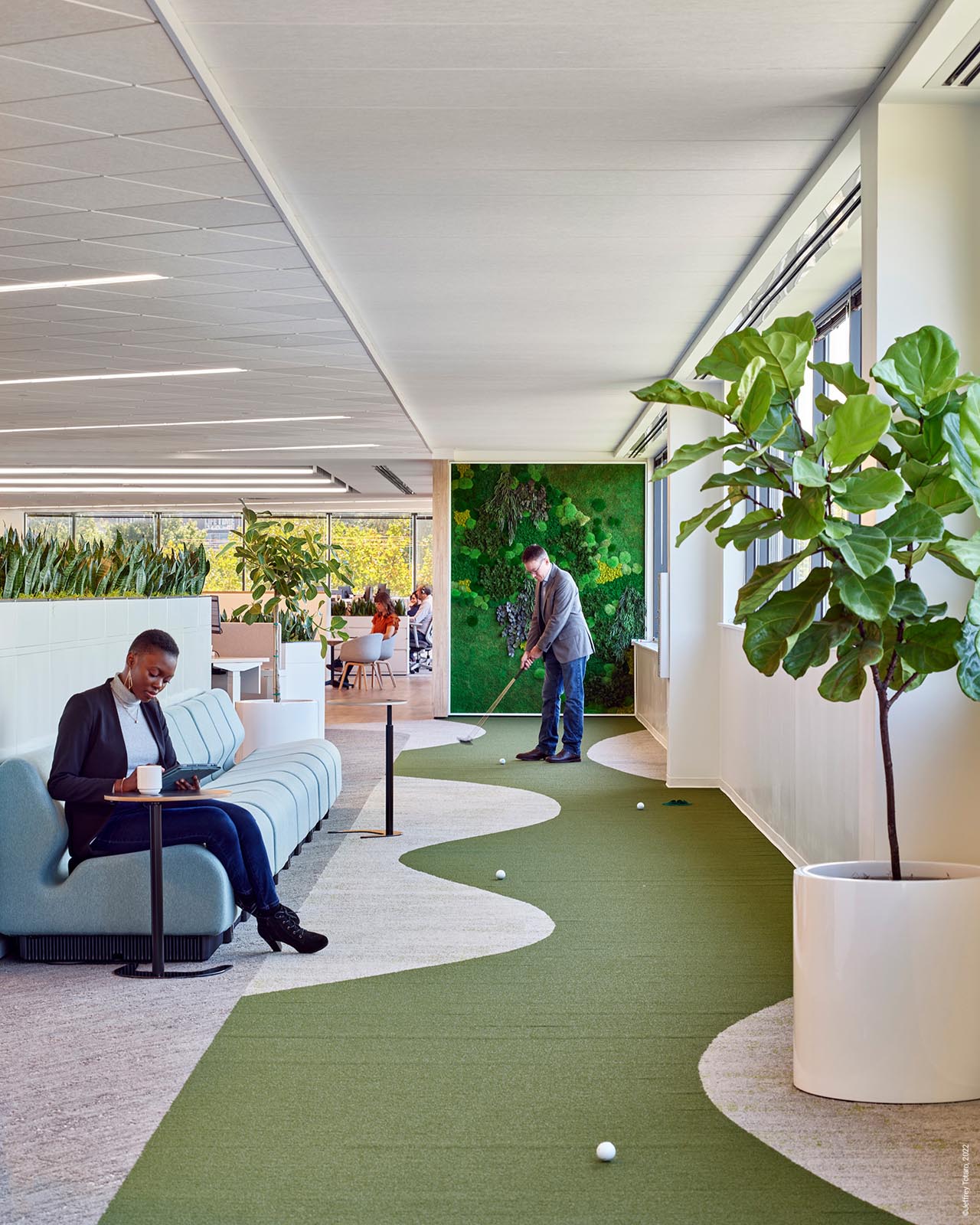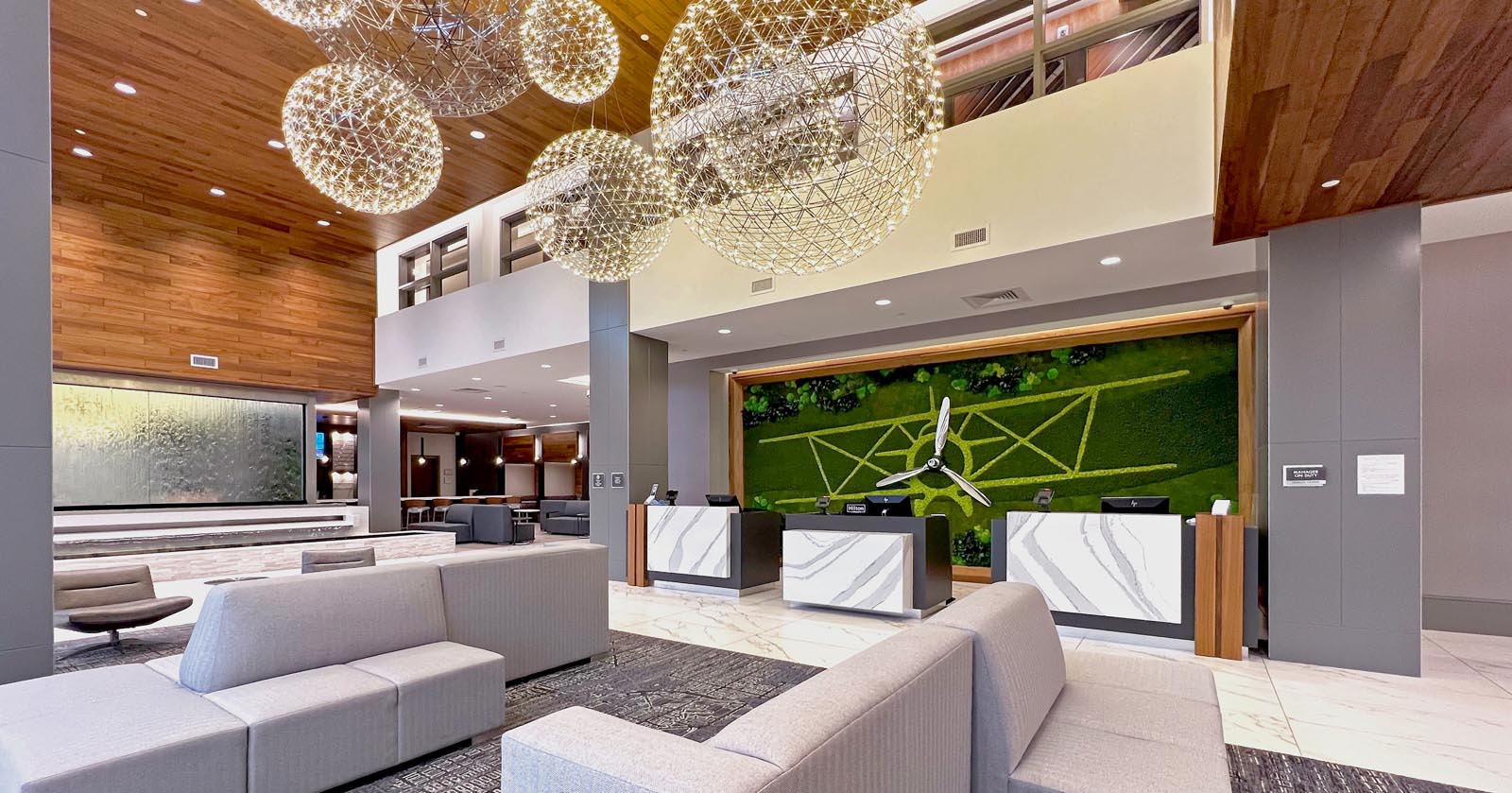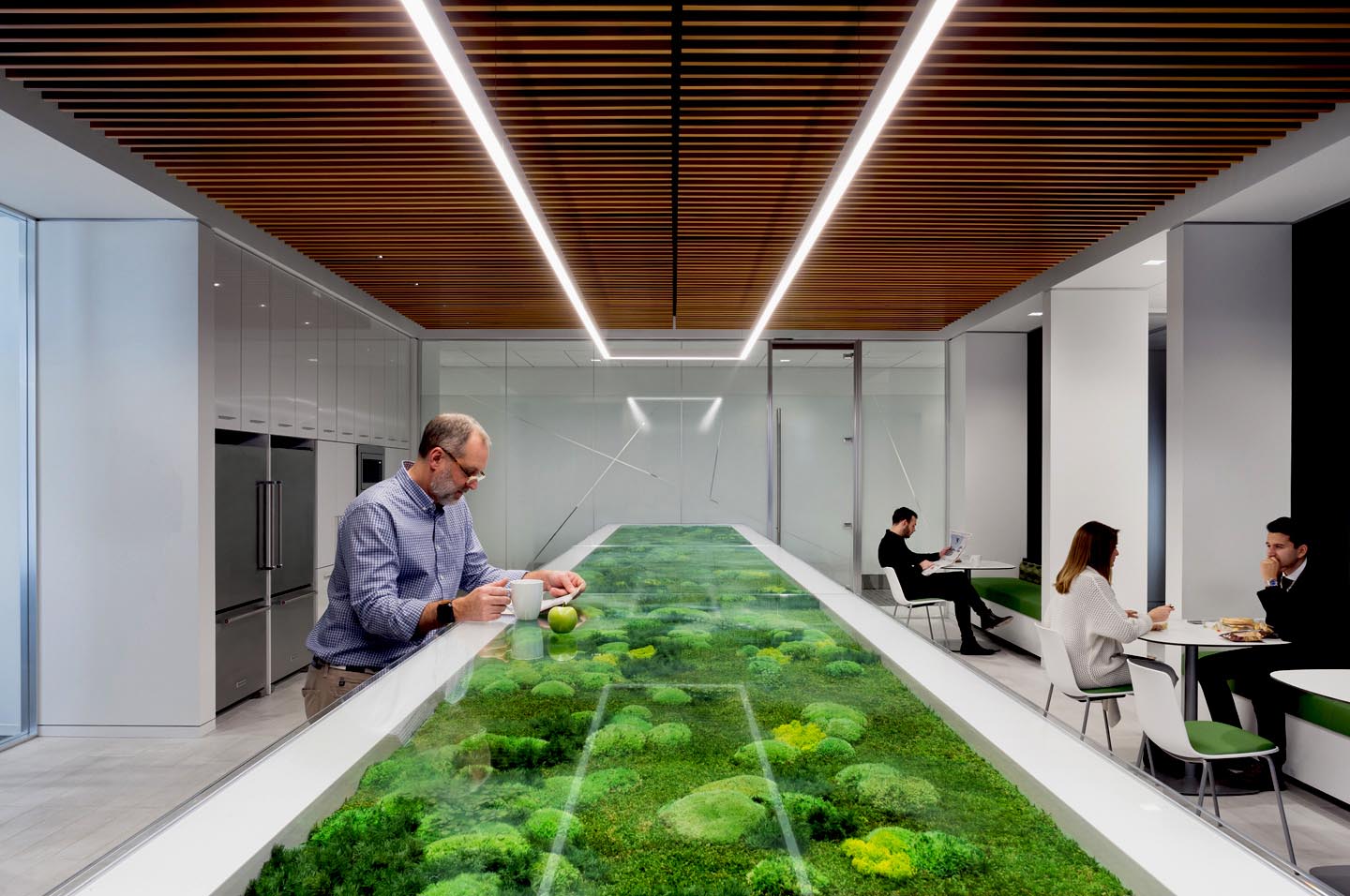Garden on the Wall®
The Future of Office Design: Nature-Inspired Collaborative Workplace Environments

Key Takeaways Before You Read the Full Article:
30 Second Executive Summary
This article explores how biophilic and biomimetic design principles can transform modern offices into collaborative, adaptable, and human-centric workspaces using preserved gardens, moss walls, and planter inserts.
🌿 Nature-Inspired Collaboration: Biophilic design in collaborative areas stimulates creativity, reduces stress, and encourages social interaction, turning meeting spaces into dynamic hubs for innovation.
🪴 Flexible, Adaptive Workspaces: Modular furniture, movable partitions, and reconfigurable preserved nature installations allow offices to easily shift between focused individual work and collaborative group activities, reflecting the adaptability of natural systems.
🎨 Bringing the Outdoors In: Preserved gardens and moss walls provide all the aesthetic and psychological benefits of nature without the maintenance challenges of living plants, creating consistent, long-lasting focal points in workspaces.
💡 Tech + Biophilia: Integration of smart lighting, interactive preserved moss walls, and environmental sensors can enhance productivity, circadian rhythm alignment, and wellness, creating responsive and engaging office environments.
🏢 Sustainable & Wellness-Focused: Low-maintenance preserved nature installations support environmental goals, reduce resource use, and foster a sense of connection to nature, promoting both personal and planetary well-being.
Ready to see how nature-inspired, biomimetic design can evolve offices into adaptable, collaborative ecosystems? The full article explores practical strategies, real-world applications, and the science behind these innovative workplace designs.
Evolving Workplace Dynamics
The modern workplace is undergoing a significant transformation, driven by changing work patterns, technological advancements, and a growing emphasis on employee well-being. As we look to the future, office design is increasingly focused on creating environments that foster collaboration, creativity, and connection. Nature-inspired design, rooted in biophilic principles, is emerging as a key strategy in shaping these next-generation workspaces.
The concept of biomimicry, which draws inspiration from nature's time-tested patterns and strategies, is particularly relevant in this evolution. By emulating natural systems and structures, designers can create office spaces that are not only more aesthetically pleasing but also more functional and conducive to human productivity and well-being. This approach aligns with our innate affinity for nature, creating work environments that feel intuitively comfortable and supportive.
Biophilic Design for Enhanced Collaboration
Collaboration is at the heart of innovation in modern workplaces, and biophilic design offers unique opportunities to enhance collaborative spaces. Natural elements and patterns can create environments that stimulate creativity, facilitate communication, and reduce stress – all crucial factors in effective teamwork. The integration of nature-inspired design in collaborative areas can range from subtle nods to nature in color schemes and textures to more overt inclusions of natural elements.
Research in environmental psychology suggests that exposure to nature, even in simulated forms, can improve cognitive function and social interaction. This has profound implications for collaborative spaces in offices. By incorporating natural elements and patterns, these areas can become more than just functional meeting spaces; they can transform into dynamic hubs that energize teams and spark innovative thinking.
Flexible and Adaptive Spaces
The future office must be adaptable to changing needs and work styles. Nature provides excellent models for flexible and resilient systems, which can be applied to office design. Think of how a forest adapts to changing conditions – this same principle can be applied to create workspaces that can easily transform to accommodate different activities and team sizes.
Modular furniture systems inspired by natural forms, movable partitions that mimic organic structures, and reconfigurable spaces that reflect the adaptability of ecosystems are all ways to bring this natural flexibility into the office environment. These elements allow for easy transitions between focused individual work and collaborative group activities, mirroring the dynamic flow found in natural habitats.
Bringing the Outdoors In
While traditional office design often treated the outdoors as separate from the workspace, future offices are blurring these lines. Large windows, indoor gardens, and nature-themed art are becoming commonplace. However, the challenges of maintaining living plants in office environments, including issues with lighting, maintenance, and potential allergies, have led designers to seek alternative solutions.
This is where preserved gardens, moss walls, and planter inserts with preserved foliage offer a compelling option. These elements provide the visual and psychological benefits of nature without the maintenance challenges associated with living plants. Preserved nature installations can be used to create stunning focal points in collaborative areas, define meeting spaces, or add a touch of nature to otherwise sterile environments. They offer a consistent, long-lasting way to incorporate natural elements into the office design.

Biophilic Technology Integration
The future of office design lies not just in passive natural elements but in the active integration of technology with biophilic principles. Smart systems that mimic natural processes can create more responsive and efficient work environments. For example, lighting systems that adjust color temperature throughout the day to mirror natural light cycles can improve circadian rhythms and boost productivity.
Preserved nature elements can play a role in this tech-nature fusion. Interactive preserved moss walls that respond to touch or movement, or preserved gardens integrated with air quality sensors, can create dynamic, engaging spaces that blend the benefits of nature with cutting-edge technology. This integration supports a more holistic approach to workplace wellness, addressing both the physical and psychological needs of employees.
Acoustic Comfort and Natural Soundscapes
In open-plan offices, managing acoustics is crucial for creating effective collaborative spaces. Nature-inspired design offers solutions here as well. The varied textures of preserved moss walls and gardens can act as natural sound absorbers, helping to reduce noise pollution and create more comfortable acoustic environments. Additionally, the incorporation of natural soundscapes – like gentle water features or subtle forest sounds –can mask distracting noises and create a more calming atmosphere.
These auditory elements, combined with the visual presence of natural forms, create a multi-sensory biophilic experience. This approach aligns with principles of neuroarchitecture, which considers how our brains respond to different environmental stimuli. By engaging multiple senses, these nature-inspired collaborative spaces can enhance focus, reduce stress, and improve overall workplace satisfaction.
Sustainable and Wellness-Focused Design
As environmental consciousness grows, the office of the future must prioritize sustainability alongside employee wellness. Preserved nature elements align well with these goals, offering a low-maintenance, long-lasting alternative to both living plants and artificial replicas. Unlike synthetic plants, which often end up in landfills and contribute to plastic pollution, high-quality preserved nature installations can last for years with minimal environmental impact.
Moreover, the presence of these natural elements contributes to a sense of connection with the environment, potentially fostering more environmentally conscious behavior among employees. This aligns with broader corporate sustainability goals and can be a powerful tool in creating a workplace culture that values both personal and planetary well-being.
Conclusion: A Natural Evolution of Work
The future of office design, with its focus on nature-inspired collaborative spaces, represents more than just a aesthetic trend. It's a fundamental shift towards creating work environments that are more human-centric, adaptable, and aligned with our innate connection to nature. By incorporating elements like preserved gardens, moss walls and planter inserts curated with preserved foliage, offices can reap the benefits of biophilic design without the challenges associated with traditional indoor plant scaping.
As we continue to redefine what the workplace looks like in a post-pandemic world, these nature-inspired collaborative spaces offer a way to create offices that people want to come to – spaces that inspire creativity, foster well-being, and adapt to our changing needs. The office of the future is not just a place to work; it's a living, breathing ecosystem that supports and nurtures its inhabitants, much like the natural world that inspired it.
For more information on this subject and other related information, please visit our website: www.gardenonthewall.com
Related Posts

The Future of Workplaces: Green Office Design Trends to Watch

The Future of Hospitality: Nature-Inspired Hotels and Restaurants


